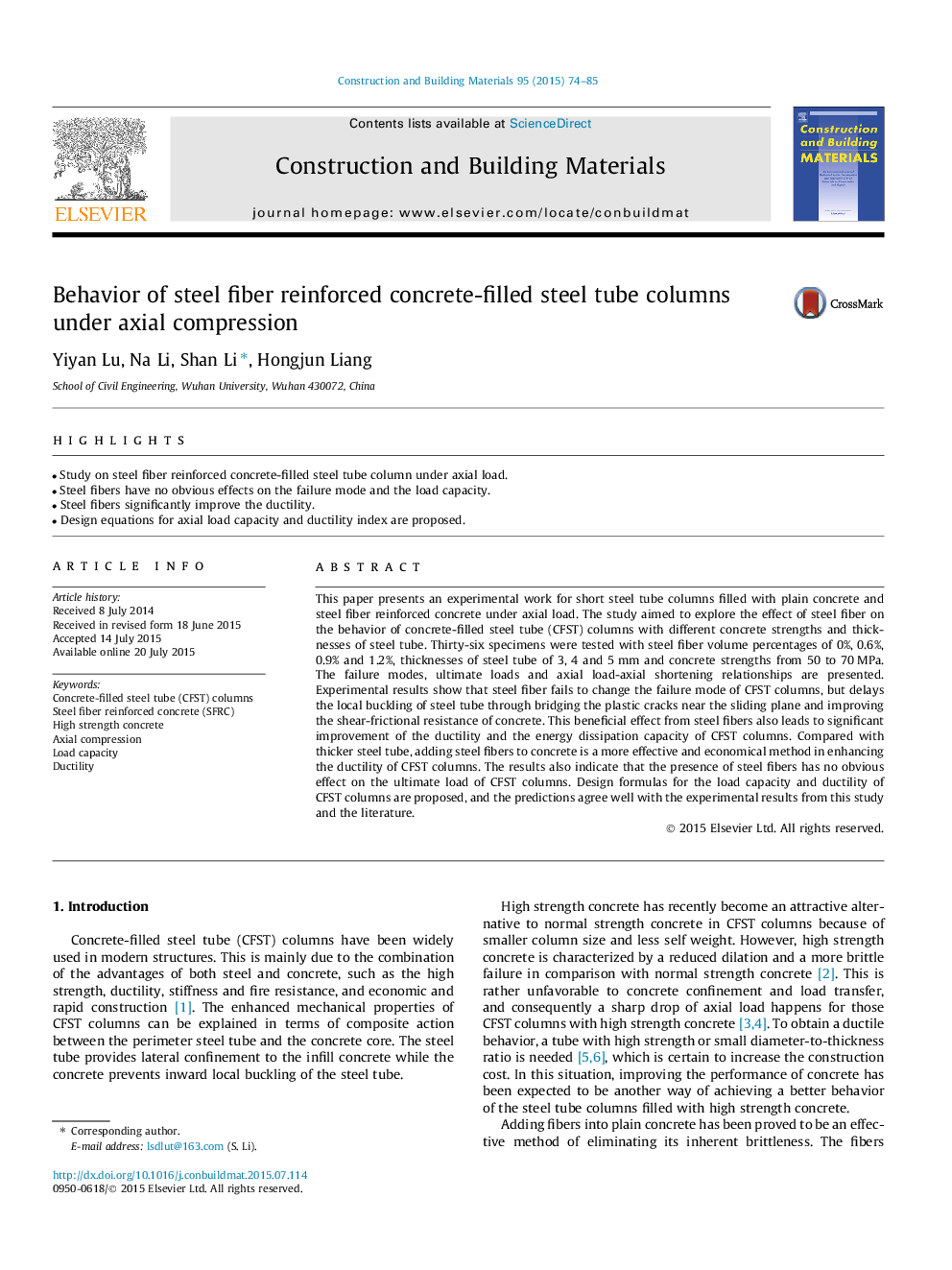| Article ID | Journal | Published Year | Pages | File Type |
|---|---|---|---|---|
| 256761 | Construction and Building Materials | 2015 | 12 Pages |
•Study on steel fiber reinforced concrete-filled steel tube column under axial load.•Steel fibers have no obvious effects on the failure mode and the load capacity.•Steel fibers significantly improve the ductility.•Design equations for axial load capacity and ductility index are proposed.
This paper presents an experimental work for short steel tube columns filled with plain concrete and steel fiber reinforced concrete under axial load. The study aimed to explore the effect of steel fiber on the behavior of concrete-filled steel tube (CFST) columns with different concrete strengths and thicknesses of steel tube. Thirty-six specimens were tested with steel fiber volume percentages of 0%, 0.6%, 0.9% and 1.2%, thicknesses of steel tube of 3, 4 and 5 mm and concrete strengths from 50 to 70 MPa. The failure modes, ultimate loads and axial load-axial shortening relationships are presented. Experimental results show that steel fiber fails to change the failure mode of CFST columns, but delays the local buckling of steel tube through bridging the plastic cracks near the sliding plane and improving the shear-frictional resistance of concrete. This beneficial effect from steel fibers also leads to significant improvement of the ductility and the energy dissipation capacity of CFST columns. Compared with thicker steel tube, adding steel fibers to concrete is a more effective and economical method in enhancing the ductility of CFST columns. The results also indicate that the presence of steel fibers has no obvious effect on the ultimate load of CFST columns. Design formulas for the load capacity and ductility of CFST columns are proposed, and the predictions agree well with the experimental results from this study and the literature.
